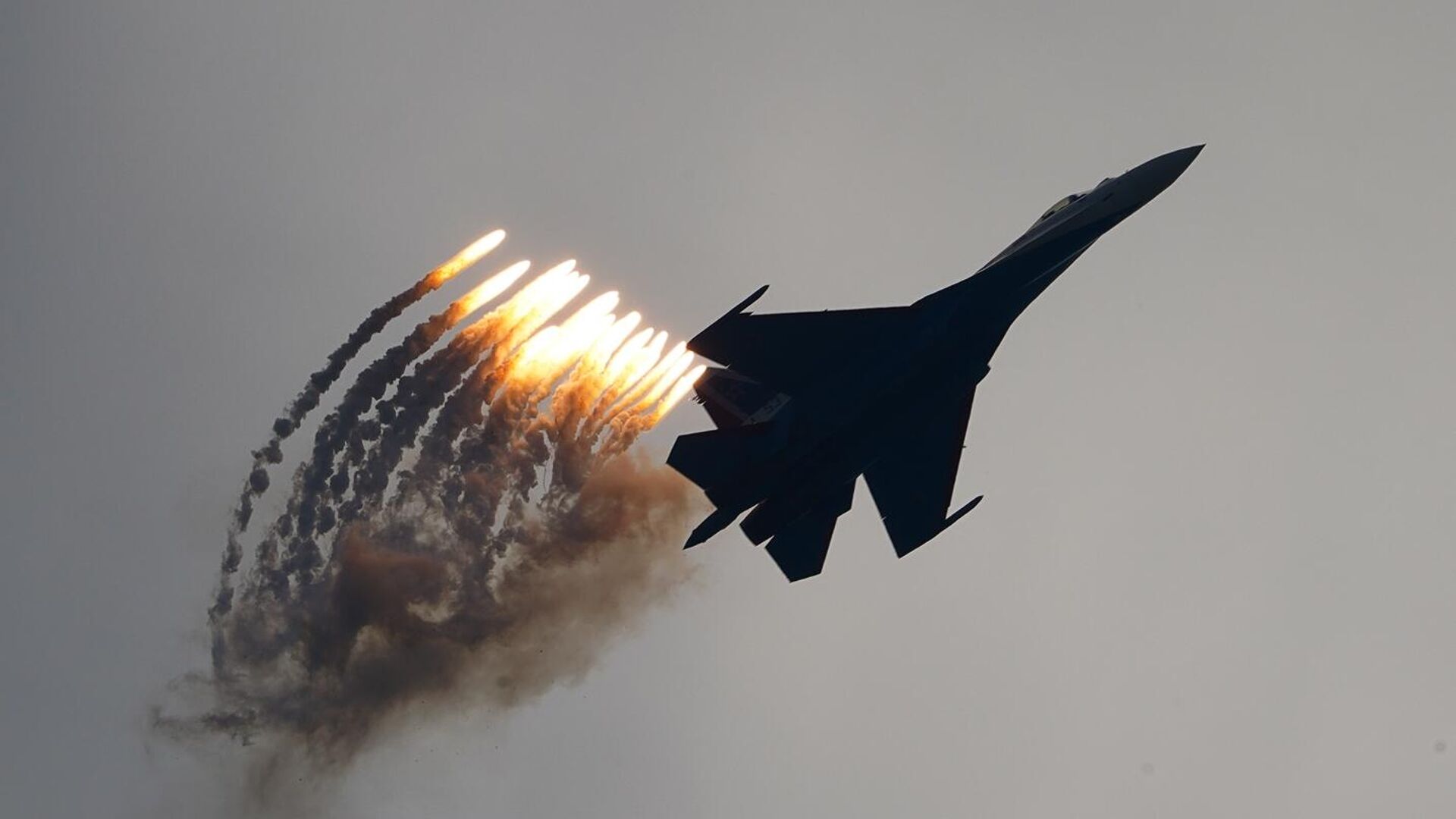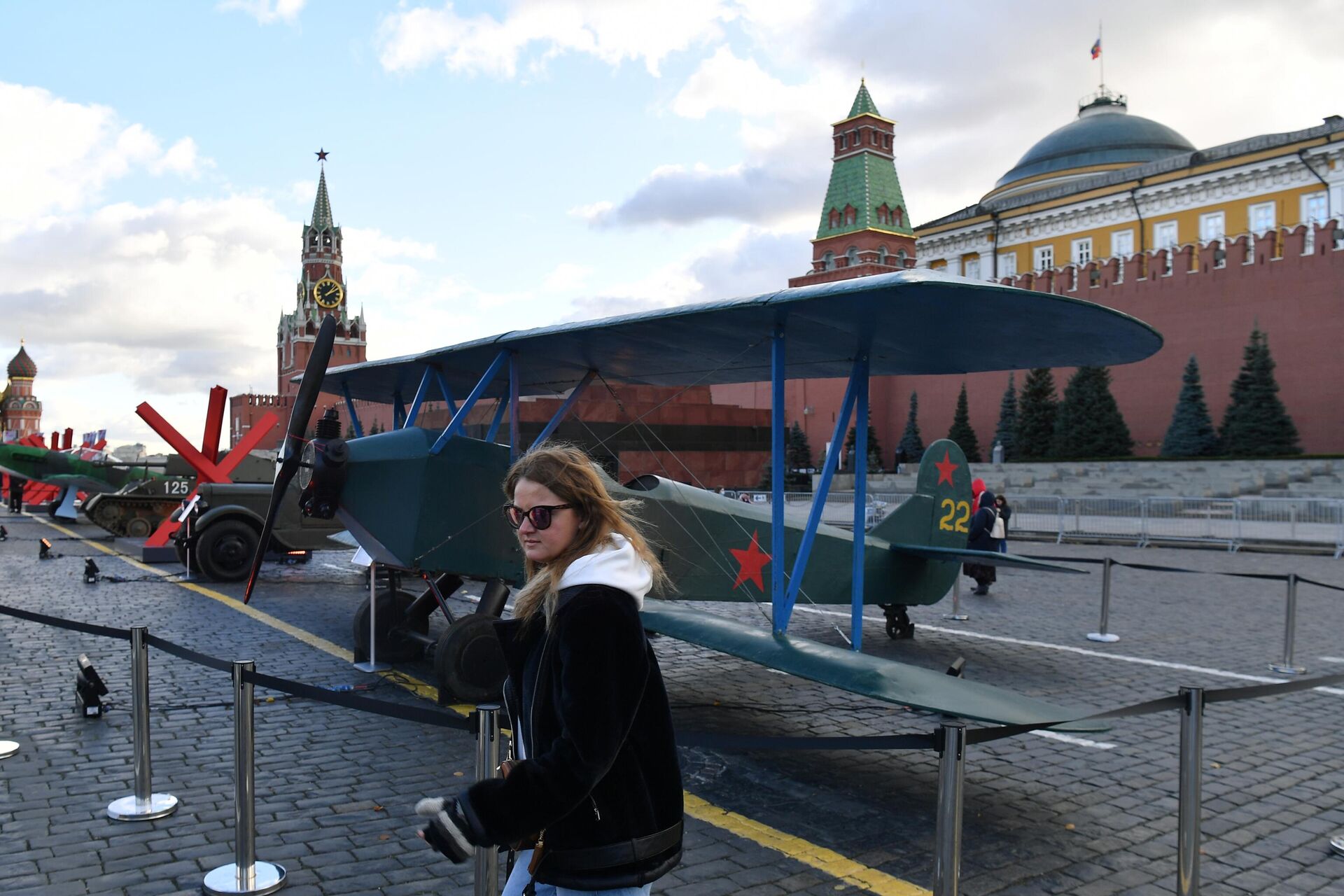https://sputnikglobe.com/20230121/what-is-the-sukhoi-su-35-super-flanker-and-how-many-does-russia-have-1106559230.html
What is the Sukhoi Su-35 Super Flanker and How Many Does Russia Have?
What is the Sukhoi Su-35 Super Flanker and How Many Does Russia Have?
Sputnik International
What are Su-35’s characteristics? When were the aircraft introduced? And why does Iran want to get its hands on them? Sputnik explains.
2023-01-21T18:00+0000
2023-01-21T18:00+0000
2023-01-21T18:00+0000
military
iran
russia
su-35
sukhoi
fighter jet
jet fighter
jet
https://cdn1.img.sputnikglobe.com/img/07e7/01/15/1106558914_0:96:1436:904_1920x0_80_0_0_75acee6d96223187f017c72cf116e1cb.jpg
A US State Department spokesperson expressed concerns last month over the “unprecedented level of military and technical support” between in Russia and Iran that was “transforming their relationship into a full-fledged defense partnership.”White House National Security Council spokesman John Kirby echoed these sentiments in a press briefing, citing the training of Iranian pilots to operate Sukhoi Su-35 multirole fighters, which he said would “significantly strengthen Iran’s air force relative to its regional neighbors.”What are Multirole Fighter Jets?First things first: Let's get definitions out of the way. The Russian military defines "multirole fighters" as aircraft designed and equipped to destroy both enemy aircraft and ground forces, including using stealth technology, if applicable. Multirole fighters differ from so-called "frontline fighters" designed primarily for air superiority missions (with a secondary fire support role), and interceptors – meant to protect ground forces from enemy aircraft and cruise missile attacks at long ranges.Russia’s experience with multirole combat aircraft goes back to the interwar period and the Soviet Union’s development of the Polikarpov R-5 reconnaissance/light bomber aircraft, and the Polikarpov Po-2 all-weather multirole aircraft - a mass-produced biplane built from the late 1920s until 1954 and used for missions including pilot training, ground attack, and reconnaissance. Nazi Germany, the United States, and Britain each experimented with their own successful multirole planes, like the Junckers Ju 88 and the de Havilland Mosquito.With the advent of jet engine technology and missiles, and the beginning of the Cold War, the design of multirole aircraft became more complex and significantly more costly. It wasn’t until the mid-1970s that a joint Italian, British, and West German design known as the Panavia Tornado was created as a do-it-all aircraft capable of interdictor/strike missions, reconnaissance and electronic warfare, and the interception of enemy jets. The US and the USSR followed suit with the Lockheed Martin F-16 and Mikoyan MiG-29 multirole jets in the late 1970s and early 1980s, respectively. Both of the latter have enjoyed a series of upgrades, and are expected to remain in service with dozens of militaries around the world for decades to come.What is the Su-35, When Was It Created and When Did It Enter Service?The Su-35 is a deep modernization of the T-10 – the platform on which the Soviet Su-27 all-weather supersonic heavy multirole fourth-generation multirole fighter was built. The Su-35’s connection with its Soviet big brother is hinted at by the early name of the modernization project – the Su-27M. The Su-27M was tinkered with between the late 1980s and the mid-1990s, and differed from the base Su-27 with the canards in front of its wings for increased maneuverability, and a rear-facing air brake. These features were deleted in the Su-35, but the canard is used by the Su-34, a fighter-bomber/strike bomber variant of the Su-27.Full-scale development work on the Su-35 by the Sukhoi Design Bureau began in the early 2000s, with the plane envisioned as a 4++ generation aircraft (4+ generation typically means upgraded armaments, onboard avionics equipment, radar, etc. while 4++ usually means the incorporation of weapons and systems found on next-gen aircraft). The Su-35 was bestowed the NATO reporting name "Flanker-E" or "Super Flanker" – a nod to its Su-27 "Flanker" origins.The Su-35 is piloted by a single airman, and features twin AL-41F1 engines with thrust-vectoring nozzles allowing for supermaneuvrability – i.e., the ability to perform maneuvers which are not possible using only traditional aerodynamics-based techniques. The aircraft has a top speed of up to 2,500 km per hour (Mach 2.3). It features a high-precision phased antenna array radar with a range of over 400 km and maximum deflection angle of up to 120 degrees, onboard electronic warfare equipment, and two optional outboard fuel tanks which increase its maximum range from 3,600 to 4,500 km. The onboard computer allows the Su-35 to detect and target up to four ground or 30 air targets, and engage between two and eight targets simultaneously, depending on the missile used. Speaking of the weapons complement, it includes a 150 round 30 mm aircraft gun, an eight-ton useful combat load, and 12 weapons hard points for short, medium, and long range air-to-air, air-to-ground, and anti-ship missiles, and two types of unguided munitions.The first prototype of the Su-35 appeared at the 2007 MAKS air show outside Moscow. Its first flight took place in 2008, and in 2009, the Russian Air Force contracted Sukhoi to supply it with 48 Su-35s, delivered in full by late 2015.How Many Su-35s Does Russia Have?The Russian Air Force now operates at least 93 Su-35 aircraft across eight different air bases inside Russia, plus four which are stationed at the Khmeimim Air Base in Syria.How Much Do Su-35s Cost?The Russian Defense Ministry has been tight-lipped about the per unit cost of a single Su-35 for the internal market. However, Russian business media reported in 2015 that the military had contracted the United Aircraft Corporation, Sukhoi’s parent company, to build 48 Su-35s for “about 100 billion rubles” – meaning a per unit price tag of around two billion rubles (about $29.3 million US at the current exchange rate).Have Any Su-35s Been Lost in Ukraine?Su-35s made their combat debut in Syria in 2016, and have provided cover to other aircraft on bombing missions, and secured airspace over the country’s northwest.The escalation of the long-running conflict in Donbass into a full-on NATO-Russia proxy war in Ukraine in 2022 has been accompanied by an intense information war online. Russian Su-35s have taken an active part in the suppression of Ukrainian air defenses, and have claimed at least a dozen victories in air-to-air combat against Ukrainian aircraft. Claims of how many Su-35s may have been lost in the fighting vary dramatically, with the Ukrainian General Staff claiming in August that Russia had lost up to “two squadrons,” i.e. 24 planes, by that point. US media offered a more modest appraisal, suggesting in the summer that up to two Su-35s had been lost. Ukrainian media published footage in March of the wreckage of a jet they claimed was an Su-35 in a field in the Kharkov region, as well as a video of its purported captured pilot. Western media reported that pieces of the wreck were sent to labs in the UK and Nevada for analysis, citing this as a major propaganda coup for NATO.The Russian military has not confirmed the loss of any Su-35s in Ukraine, and judging by the videos alone, all that’s clear is that the wrecked plane appears to be a derivative of the Su-27 family (which Ukraine, incidentally, also has). In other words, the Su-35’s losses over 11 months of operations in Ukraine are either zero or one.What Countries Besides Russia Operate the Su-35?The Chinese People’s Liberation Army Air Force is the only air force besides Russia’s with Su-35s in service. Russia and China inked a $2 billion contract for 24 Su-35s in 2015, with the planes fully delivered by 2018. The US slapped sanctions on Chinese entities over the purchase under Washington’s "Countering America’s Adversaries Through Sanctions Act." China has not bought any additional Su-35s, instead focusing on its domestically produced Shenyang J-16 (a derivative of the Shenyang J-11 air superiority fighter – which was derived from the Su-27).Why Does Iran Want Su-35s?Iran’s expected delivery of up to two dozen Su-35 jets comes shortly after Egypt backed out of a contract to purchase the jets under pressure from the US, with media reports suggesting that the Su-35s slated for delivery to Egypt are being diverted to Iran instead. Russian and Iranian officials have not confirmed this information.In any event, the Russian 4++ generation aircraft will be a welcome addition to Iran’s Air Force, which due to decades of sanctions pressure has been left with a sparse inventory of aging combat aircraft, including US-made F-4 Phantom IIs, F-5 Tiger IIs, F-14 Tomcats, French Mirage F1s, Chinese Chengdu J-7s (a license-built MiG-21), and Soviet-made MiG-29s and Su-24s. According to media reports, Iran has been on the lookout for modern Russian or Chinese-sourced multirole jets for about a decade, with the October 2020 lifting of a United Nations arms embargo untying Tehran’s hands for the purchase.The Islamic Republic has prided itself on its defense-industrial base, which has produced a range of advanced missile systems, cutting-edge radar technology, and a fully autonomous defense electronics sector. In accordance with its self-reliance philosophy, the nation has experimented with options for homegrown aircraft, introducing the HESA Kowsar fighter/trainer in 2018, and the IAIO Qaher-313, a stealth fighter first shown in 2013 that’s thought to be in development. The Su-35 will be sure to provide Iranian airmen, commanders, and military engineers food for thought about the future development of the domestic aircraft industry, and the Iranian Air Force's tactical and strategic capabilities. More on this below.How Does the Su-35 Match Up Against the F-35?The Su-35’s 4++ generation engine, radar, and weapons package makes it a serious competitor against top US planes, including not only the F-16 and F-22, but Lockheed Martin’s monster $1.7 trillion F-35 Lightning II multirole jet as well. While it is outclassed by the F-35 on stealth and avionics, the Su-35 features superior maneuverability, a higher top speed (2,400 km vs. 1,960 km per hour), and longer range (3,600 km vs. 2,800 km).While they are marketed as stealth fighters, F-35s can be detected using some radar types, including, reportedly, the Su-35’s onboard Ibris-E. Given the F-35’s sleek radar cross section (RCS) of as little as .005m2, the Ibris-E could hypothetically detect it up to 90 km away, which is below the F-35’s ability to hone in on the Su-35 up to 150 km away. However, according to Hellenic Air Force Colonel (ret.) Konstantinos Zikidis, when accounting for maneuverability and countermeasures, such as chaff dispensers or jammers, and "beaming maneuvers" (i.e. flying perpendicularly to the source of a radar or oncoming missile to avoid or complicate detection), an F-35 could be outclassed by a competent Su-35 pilot.Accounting for the existence of advanced radar technology, air defense forces could hone in on incoming F-35s well before they reach their target zones. Iran, incidentally, is a major power when it comes to advanced radars, with its Matla-ul-fajr (lit. "Rise of Dawn") VHF 3D radar featuring a range of up to 480 km, and operating in 100 different frequencies to prevent jamming. Working in coordination with its dense network of ground-based radars and missile systems, such as the Bavar 373 and the Khordad 3, Su-35s in Iran’s arsenal should help the Islamic Republic make short work of any adversaries foolish enough to attack.
https://sputnikglobe.com/20220924/turkey-could-consider-buying-russias-su-35-if-deal-on-us-f-16-fails-defense-agency-1101164633.html
https://sputnikglobe.com/20221212/nine-months-into-special-military-operation-are-dogfights-over-ukraine-making-russian-aces-1105394907.html
https://sputnikglobe.com/20230120/shock-and-awe-why-russias-sukhoi-su-35-fighters-are-nightmare-for-irans-adversaries-1106503010.html
https://sputnikglobe.com/20221129/israel-and-us-to-simulate-strike-on-iran-nuclear-program-during-air-drills--1104827287.html
iran
russia
Sputnik International
feedback@sputniknews.com
+74956456601
MIA „Rossiya Segodnya“
2023
News
en_EN
Sputnik International
feedback@sputniknews.com
+74956456601
MIA „Rossiya Segodnya“
Sputnik International
feedback@sputniknews.com
+74956456601
MIA „Rossiya Segodnya“
su 35 , su-35 , sukhoi su-35 , russian su-35 , su 35 jet , su-35 fighter jet, su-35 fighters , how many su-35 does russia have , how much su 35 cost, how many su-35 does russia have, su-35 vs f-35, su-35 iran, iran, russia, iranian su-35
su 35 , su-35 , sukhoi su-35 , russian su-35 , su 35 jet , su-35 fighter jet, su-35 fighters , how many su-35 does russia have , how much su 35 cost, how many su-35 does russia have, su-35 vs f-35, su-35 iran, iran, russia, iranian su-35
A US State Department spokesperson
expressed concerns last month over the “unprecedented level of military and technical support” between in Russia and Iran that was “transforming their relationship into a full-fledged defense partnership.”
White House National Security Council spokesman John Kirby
echoed these sentiments in a press briefing, citing the training of Iranian pilots to operate Sukhoi Su-35 multirole fighters, which he said would “significantly strengthen Iran’s air force relative to its regional neighbors.”
What are Multirole Fighter Jets?
First things first: Let's get definitions out of the way. The Russian military defines "multirole fighters" as aircraft designed and equipped to destroy both enemy aircraft and ground forces, including using stealth technology, if applicable. Multirole fighters differ from so-called "frontline fighters" designed primarily for air superiority missions (with a secondary fire support role), and interceptors – meant to protect ground forces from enemy aircraft and cruise missile attacks at long ranges.
Russia’s experience with multirole combat aircraft goes back to the interwar period and the Soviet Union’s development of the Polikarpov R-5 reconnaissance/light bomber aircraft, and the Polikarpov Po-2 all-weather multirole aircraft - a mass-produced biplane built from the late 1920s until 1954 and used for missions including pilot training, ground attack, and reconnaissance. Nazi Germany, the United States, and Britain each experimented with their own successful multirole planes, like the Junckers Ju 88 and the de Havilland Mosquito.
With the advent of jet engine technology and missiles, and the beginning of the Cold War, the design of multirole aircraft became more complex and significantly more costly. It wasn’t until the mid-1970s that a joint Italian, British, and West German design known as the Panavia Tornado was created as a do-it-all aircraft capable of interdictor/strike missions, reconnaissance and electronic warfare, and the interception of enemy jets. The US and the USSR followed suit with the Lockheed Martin F-16 and Mikoyan MiG-29 multirole jets in the late 1970s and early 1980s, respectively. Both of the latter have enjoyed a series of upgrades, and are expected to remain in service with dozens of militaries around the world for decades to come.
What is the Su-35, When Was It Created and When Did It Enter Service?
The Su-35 is a deep modernization of the T-10 – the platform on which the Soviet Su-27 all-weather supersonic heavy multirole fourth-generation multirole fighter was built. The Su-35’s connection with its Soviet big brother is hinted at by the early name of the modernization project – the Su-27M. The Su-27M was tinkered with between the late 1980s and the mid-1990s, and differed from the base Su-27 with the canards in front of its wings for increased maneuverability, and a rear-facing air brake. These features were deleted in the Su-35, but the canard is used by the Su-34, a fighter-bomber/strike bomber variant of the Su-27.
Full-scale development work on the Su-35 by the Sukhoi Design Bureau began in the early 2000s, with the plane envisioned as a 4++ generation aircraft (4+ generation typically means upgraded armaments, onboard avionics equipment, radar, etc. while 4++ usually means the incorporation of weapons and systems found on next-gen aircraft). The Su-35 was bestowed the NATO reporting name "Flanker-E" or "Super Flanker" – a nod to its Su-27 "Flanker" origins.
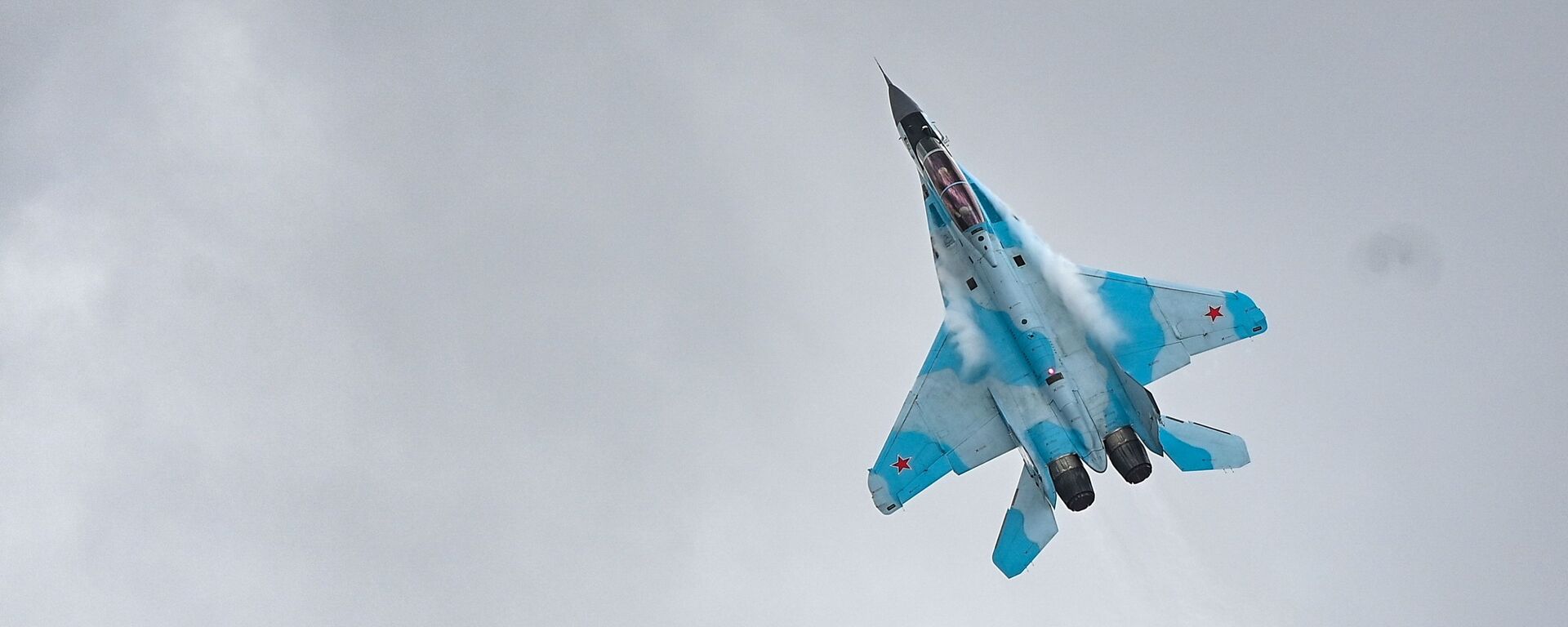
24 September 2022, 09:07 GMT
The Su-35 is piloted by a single airman, and features twin AL-41F1 engines with thrust-vectoring nozzles allowing for supermaneuvrability – i.e., the ability to perform maneuvers which are not possible using only traditional aerodynamics-based techniques. The aircraft has a top speed of up to 2,500 km per hour (Mach 2.3). It features a high-precision phased antenna array radar with a range of over 400 km and maximum deflection angle of up to 120 degrees, onboard electronic warfare equipment, and two optional outboard fuel tanks which increase its maximum range from 3,600 to 4,500 km. The onboard computer allows the Su-35 to detect and target up to four ground or 30 air targets, and engage between two and eight targets simultaneously, depending on the missile used. Speaking of the weapons complement, it includes a 150 round 30 mm aircraft gun, an eight-ton useful combat load, and 12 weapons hard points for short, medium, and long range air-to-air, air-to-ground, and anti-ship missiles, and two types of unguided munitions.
The first prototype of the Su-35 appeared at the 2007 MAKS air show outside Moscow. Its first flight took place in 2008, and in 2009, the Russian Air Force contracted Sukhoi to supply it with 48 Su-35s, delivered in full by late 2015.
How Many Su-35s Does Russia Have?
The Russian Air Force now operates at least 93 Su-35 aircraft across eight different air bases inside Russia, plus four which are stationed at the Khmeimim Air Base in Syria.
The Russian Defense Ministry has been tight-lipped about the per unit cost of a single Su-35 for the internal market. However, Russian business media reported in 2015 that the military had contracted the United Aircraft Corporation, Sukhoi’s parent company, to build 48 Su-35s for
“about 100 billion rubles” – meaning a per unit price tag of around two billion rubles (about $29.3 million US at the current exchange rate).
Have Any Su-35s Been Lost in Ukraine?
Su-35s made their combat debut in Syria in 2016, and have provided cover to other aircraft on bombing missions, and secured airspace over the country’s northwest.
The escalation of the long-running conflict in Donbass into a full-on NATO-Russia proxy war in Ukraine in 2022 has been accompanied by an intense information war online. Russian Su-35s have taken an active part in the suppression of Ukrainian air defenses, and have claimed at least a dozen victories in air-to-air combat against Ukrainian aircraft. Claims of how many Su-35s may have been lost in the fighting vary dramatically, with the Ukrainian General Staff claiming in August that Russia had lost up to
“two squadrons,” i.e. 24 planes, by that point. US media offered a more modest appraisal, suggesting in the summer that up to
two Su-35s had been lost. Ukrainian media
published footage in March of the wreckage of a jet they claimed was an Su-35 in a field in the Kharkov region, as well as a video of its purported captured pilot. Western media
reported that pieces of the wreck were sent to labs in the UK and Nevada for analysis, citing this as a major propaganda coup for NATO.
The Russian military has not confirmed the loss of any Su-35s in Ukraine, and judging by the videos alone, all that’s clear is that the wrecked plane appears to be a derivative of the Su-27 family (which Ukraine, incidentally, also has). In other words, the Su-35’s losses over 11 months of operations in Ukraine are either zero or one.
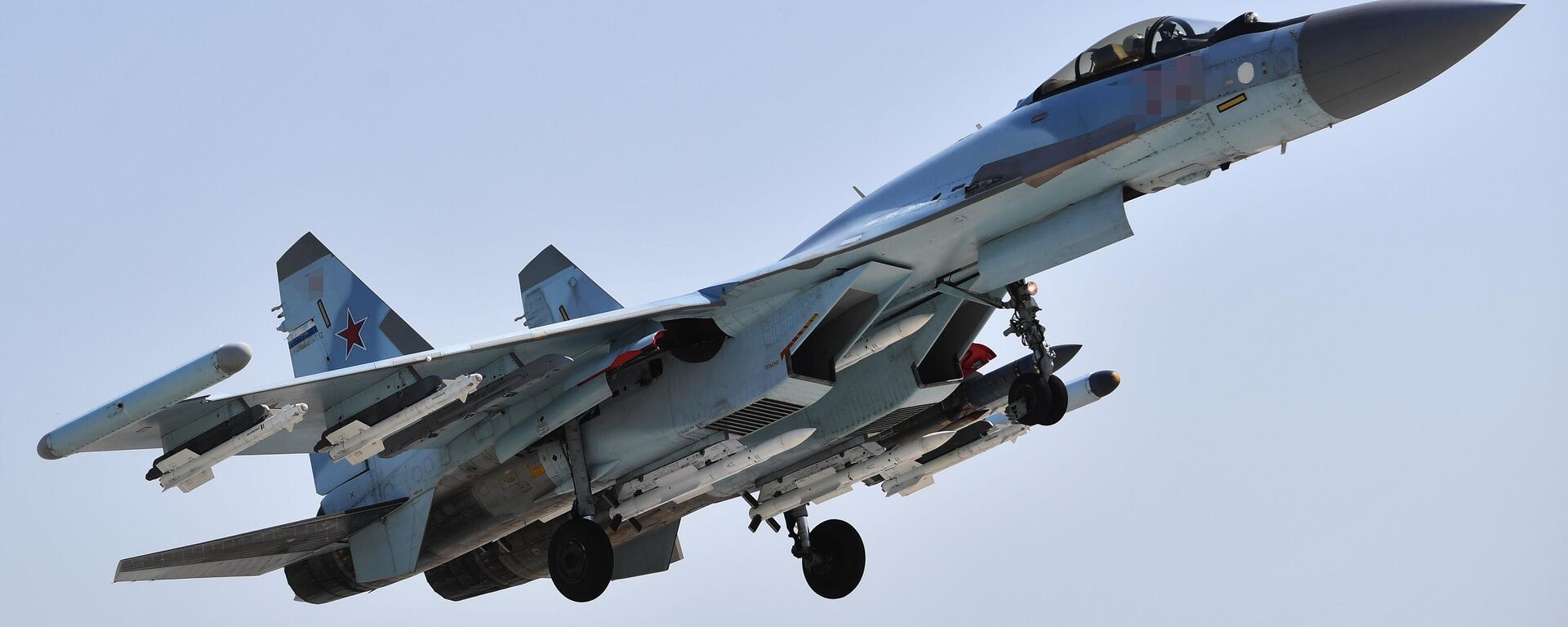
12 December 2022, 18:44 GMT
What Countries Besides Russia Operate the Su-35?
The Chinese People’s Liberation Army Air Force is the only air force besides Russia’s with Su-35s in service. Russia and China inked a $2 billion contract for 24 Su-35s in 2015, with the planes fully delivered by 2018. The US slapped sanctions on Chinese entities over the purchase under Washington’s "Countering America’s Adversaries Through Sanctions Act." China has not bought any additional Su-35s, instead focusing on its domestically produced Shenyang J-16 (a derivative of the Shenyang J-11 air superiority fighter – which was derived from the Su-27).
Why Does Iran Want Su-35s?
Iran’s expected delivery of up to two dozen Su-35 jets comes shortly after
Egypt backed out of a contract to purchase the jets under pressure from the US, with media reports
suggesting that the Su-35s slated for delivery to Egypt are being diverted to Iran instead. Russian and Iranian officials have not confirmed this information.
In any event, the Russian 4++ generation aircraft will be a welcome addition to Iran’s Air Force, which due to decades of sanctions pressure has been left with a sparse inventory of aging combat aircraft, including US-made F-4 Phantom IIs, F-5 Tiger IIs, F-14 Tomcats, French Mirage F1s, Chinese Chengdu J-7s (a license-built MiG-21), and Soviet-made MiG-29s and Su-24s. According to media reports, Iran has been on the lookout for modern Russian or Chinese-sourced multirole jets for about a decade, with the October 2020 lifting of a United Nations arms embargo untying Tehran’s hands for the purchase.
The Islamic Republic has prided itself on its defense-industrial base, which has produced a range of advanced missile systems, cutting-edge radar technology, and a fully autonomous defense electronics sector. In accordance with its self-reliance philosophy, the nation has experimented with options for homegrown aircraft, introducing the HESA Kowsar fighter/trainer in 2018, and the IAIO Qaher-313, a stealth fighter first shown in 2013 that’s thought to be in development. The Su-35 will be sure to provide Iranian airmen, commanders, and military engineers food for thought about the future development of the domestic aircraft industry, and the Iranian Air Force's tactical and strategic capabilities. More on this below.

20 January 2023, 04:00 GMT
How Does the Su-35 Match Up Against the F-35?
The Su-35’s 4++ generation engine, radar, and weapons package makes it a serious competitor against top US planes, including not only the F-16 and F-22, but Lockheed Martin’s monster $1.7 trillion F-35 Lightning II multirole jet as well. While it is outclassed by the F-35 on stealth and avionics, the Su-35 features superior maneuverability, a higher top speed (2,400 km vs. 1,960 km per hour), and longer range (3,600 km vs. 2,800 km).
While they are marketed as stealth fighters, F-35s can be detected using some radar types, including, reportedly, the Su-35’s onboard Ibris-E. Given the F-35’s sleek radar cross section (RCS) of as little as .005m2, the Ibris-E could hypothetically detect it up to 90 km away, which is below the F-35’s ability to hone in on the Su-35 up to 150 km away. However, according to Hellenic Air Force Colonel (ret.) Konstantinos Zikidis, when accounting for maneuverability and countermeasures, such as chaff dispensers or jammers, and "beaming maneuvers" (i.e. flying perpendicularly to the source of a radar or oncoming missile to avoid or complicate detection), an F-35 could be outclassed by a competent Su-35 pilot.
“In real life, if an F-35 on a stealthy mission would detect a Su-35, most possibly it would turn away and return to base to fight another day,” Zikidis explained. “On a strike mission, you wouldn’t appreciate the company of a supermaneuverable enemy fighter. After all, the F-35 was designed to be a strike aircraft…not a dogfighter.”
Accounting for the existence of advanced radar technology, air defense forces could hone in on incoming F-35s well before they reach their target zones. Iran, incidentally, is a major power when it comes to advanced radars, with its Matla-ul-fajr (lit. "Rise of Dawn") VHF 3D radar featuring a range of up to 480 km, and operating in 100 different frequencies to prevent jamming. Working in coordination with its dense network of ground-based radars and missile systems, such as the Bavar 373 and the Khordad 3, Su-35s in Iran’s arsenal should help the Islamic Republic make short work of any adversaries foolish enough to attack.
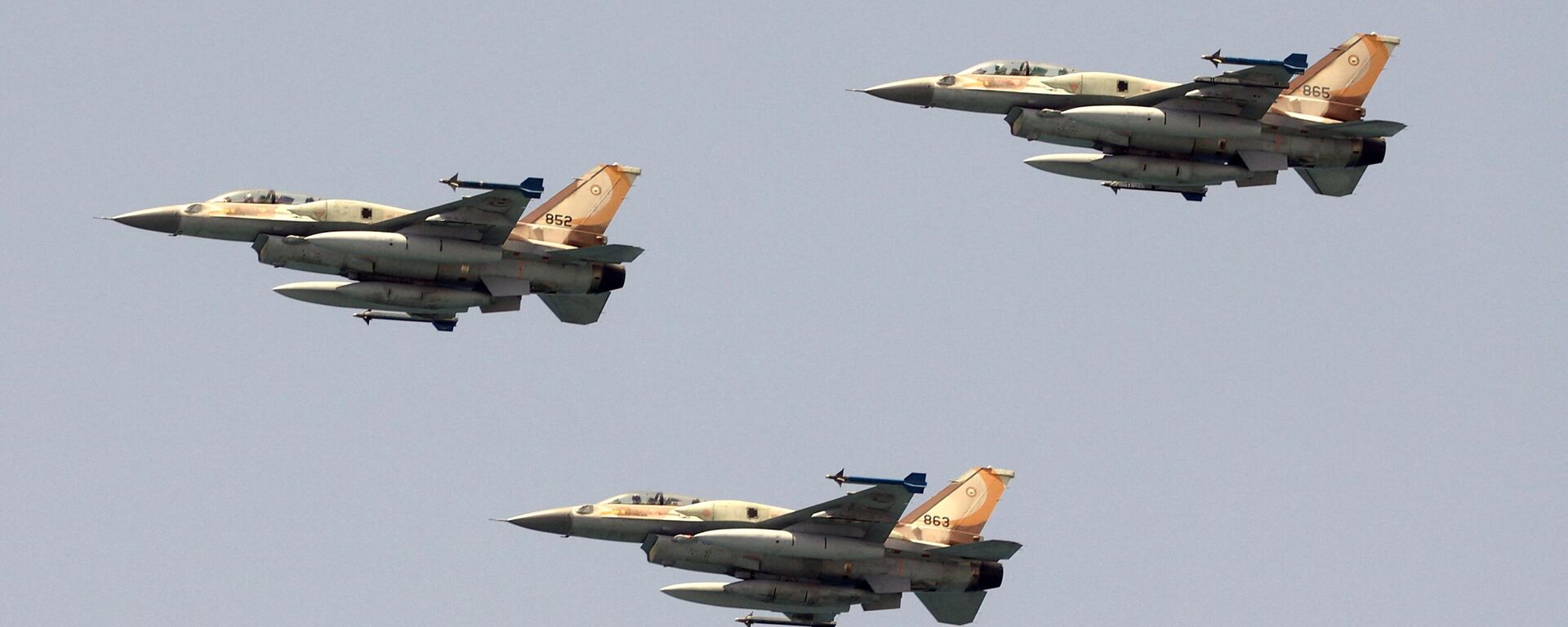
29 November 2022, 15:28 GMT
